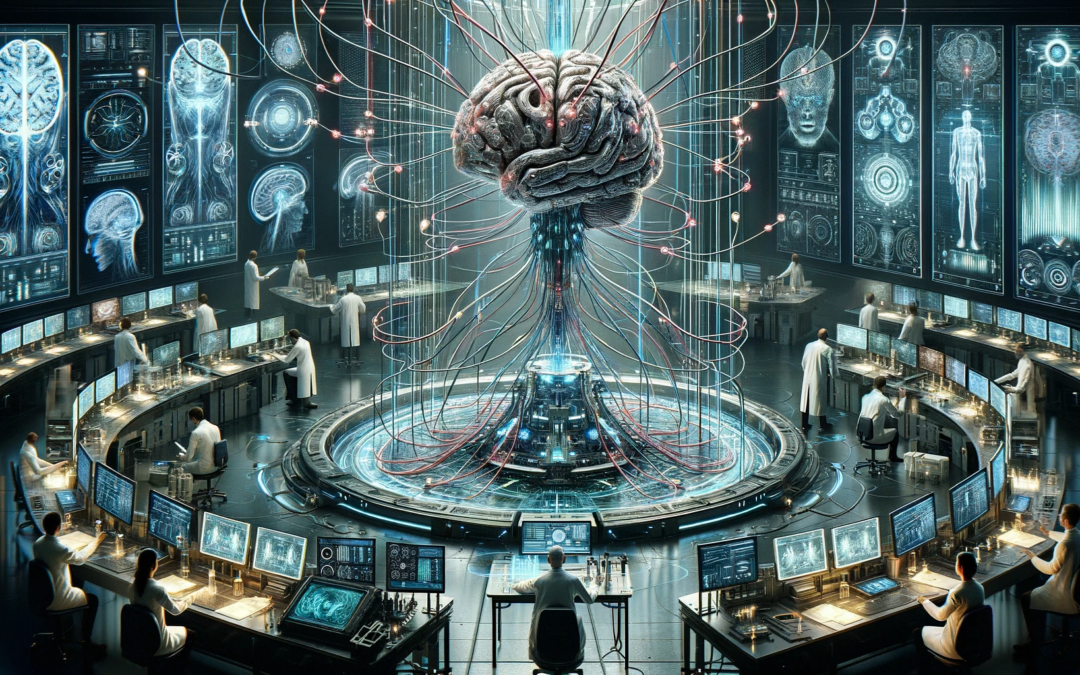In the labyrinthine world of neuroscience and artificial intelligence, the concept of mind control has transitioned from the realm of science fiction to a burgeoning scientific reality. Central to this evolution is the development of electro-chemical models, sophisticated tools that seek to decode and potentially influence the human thought process. This article delves deeper into real-life examples of how these models are being applied, shedding light on both their potential and the ethical dilemmas they pose.
The Electro-Chemical Symphony of the Brain
At the core of these models is the brain’s own natural symphony – a complex orchestra of electrical and chemical signals. Neurons, the brain’s building blocks, communicate in this electro-chemical language, forming the basis of our thoughts, emotions, and actions. Replicating this intricate network is the grand aim of AI’s neural networks, which strive to mirror the brain’s adaptability and learning capabilities, a phenomenon known as neuroplasticity.
Therapeutic Breakthroughs
Treating Mental Health Disorders: One of the most promising applications of these models is in the realm of mental health. For instance, deep brain stimulation (DBS), a technique involving the implantation of electrodes in the brain, has shown effectiveness in treating conditions like Parkinson’s disease and severe depression. By modulating specific brain circuits, DBS can alleviate symptoms, offering a new lease on life for patients who have not responded to other treatments.
Cognitive Rehabilitation: Another groundbreaking application is in cognitive rehabilitation post-brain injury. Electro-chemical models are being used to understand how brain circuits are damaged and how they can be rewired effectively. In cases of stroke or traumatic brain injury, these insights are invaluable, paving the way for tailored rehabilitation strategies that can significantly improve recovery outcomes.
Enhancing Human-AI Interaction
In the everyday digital world, these models are revolutionizing how we interact with technology. AI systems that understand human emotions and responses can offer more intuitive user experiences. For example, emotion recognition systems use AI to interpret facial expressions or voice intonations, adapting responses accordingly. This technology has vast applications, from enhancing customer service to supporting mental health professionals in diagnosing and treating patients.
The Dark Side: Ethical Implications and Misuse
However, the power to influence the mind is not without its dark side. The potential for misuse in areas such as surveillance, coercion, or even warfare is a significant concern. The notion of ‘hacking’ the human brain, whether for commercial manipulation or more sinister purposes, is a stark reminder of the need for robust ethical frameworks and stringent regulations in this field.
Navigating the Future
The journey into the mind’s inner workings through electro-chemical models is a testament to human ingenuity and curiosity. It requires a confluence of neuroscience, AI, ethics, and law, calling for an ongoing dialogue among scientists, ethicists, policymakers, and the public. As we continue to explore these uncharted territories, it is imperative that we do so with a conscientious understanding of the moral and ethical ramifications.
In summary, the exploration of electro-chemical models for mind control is a journey filled with promise and peril. The real-life applications of these models, from therapeutic uses to enhancing human-AI interactions, are already demonstrating their potential. However, as we unlock the mysteries of the human mind, we must remain vigilant to the ethical considerations, ensuring that our pursuit of knowledge and advancement does not compromise our fundamental values.










